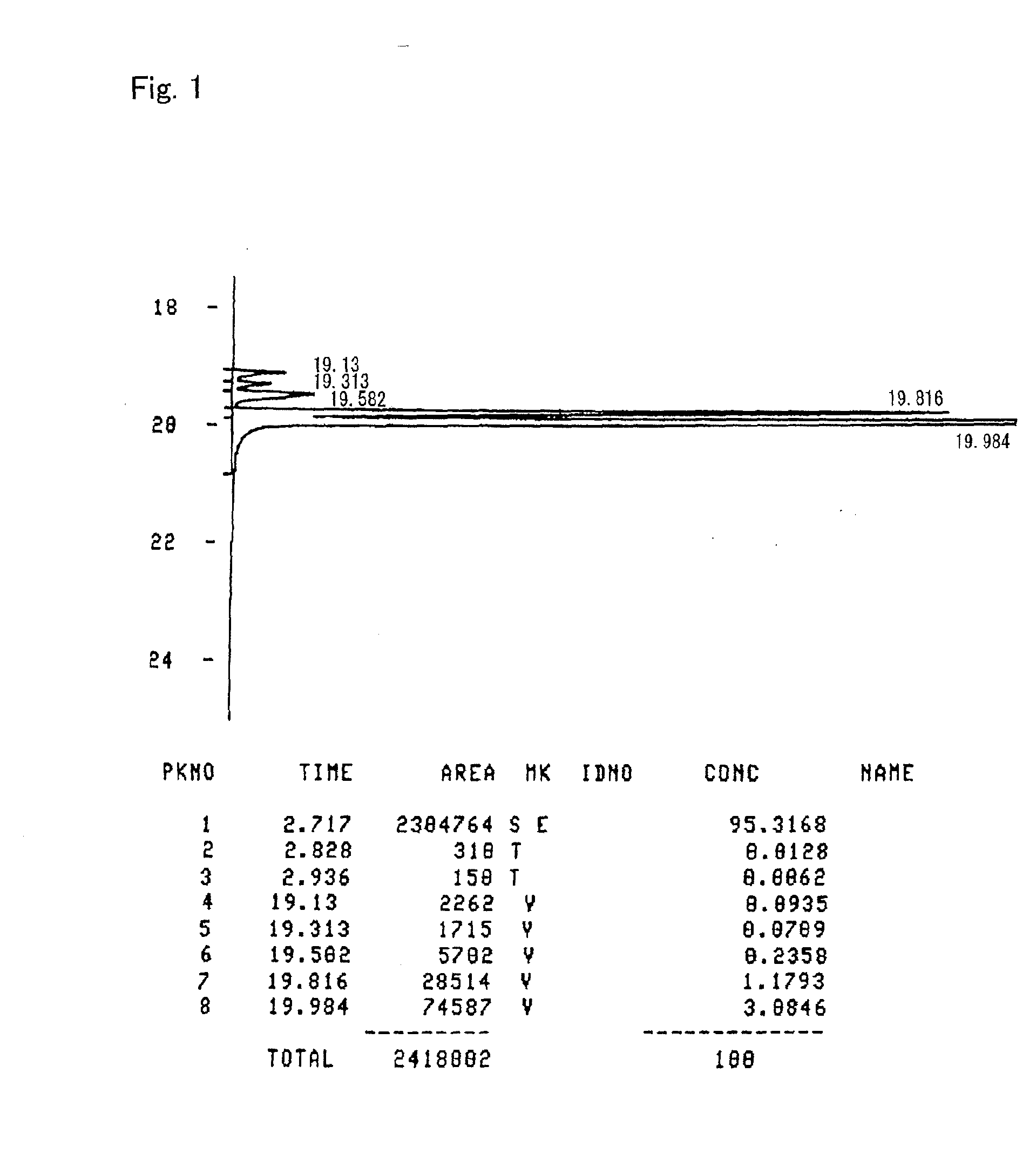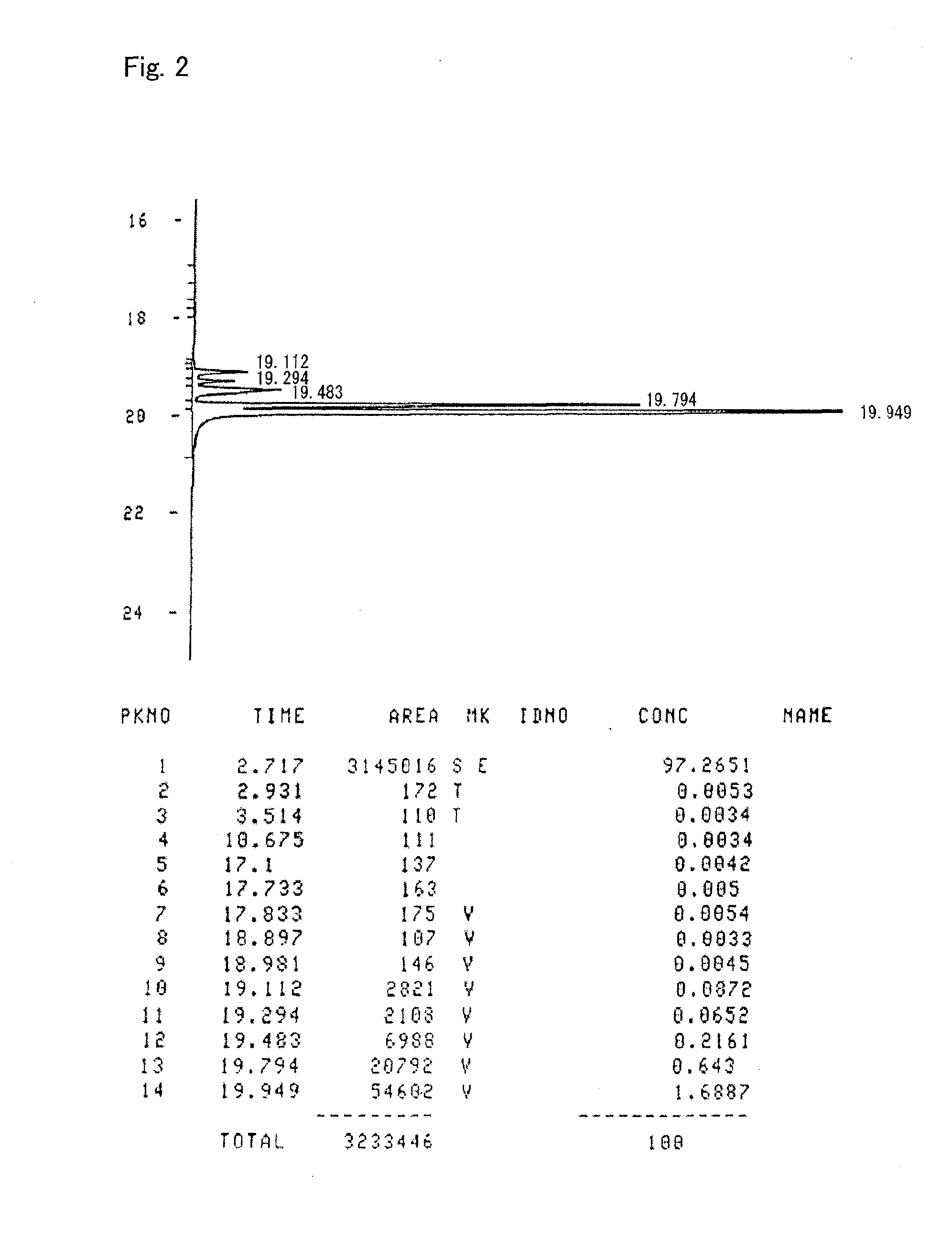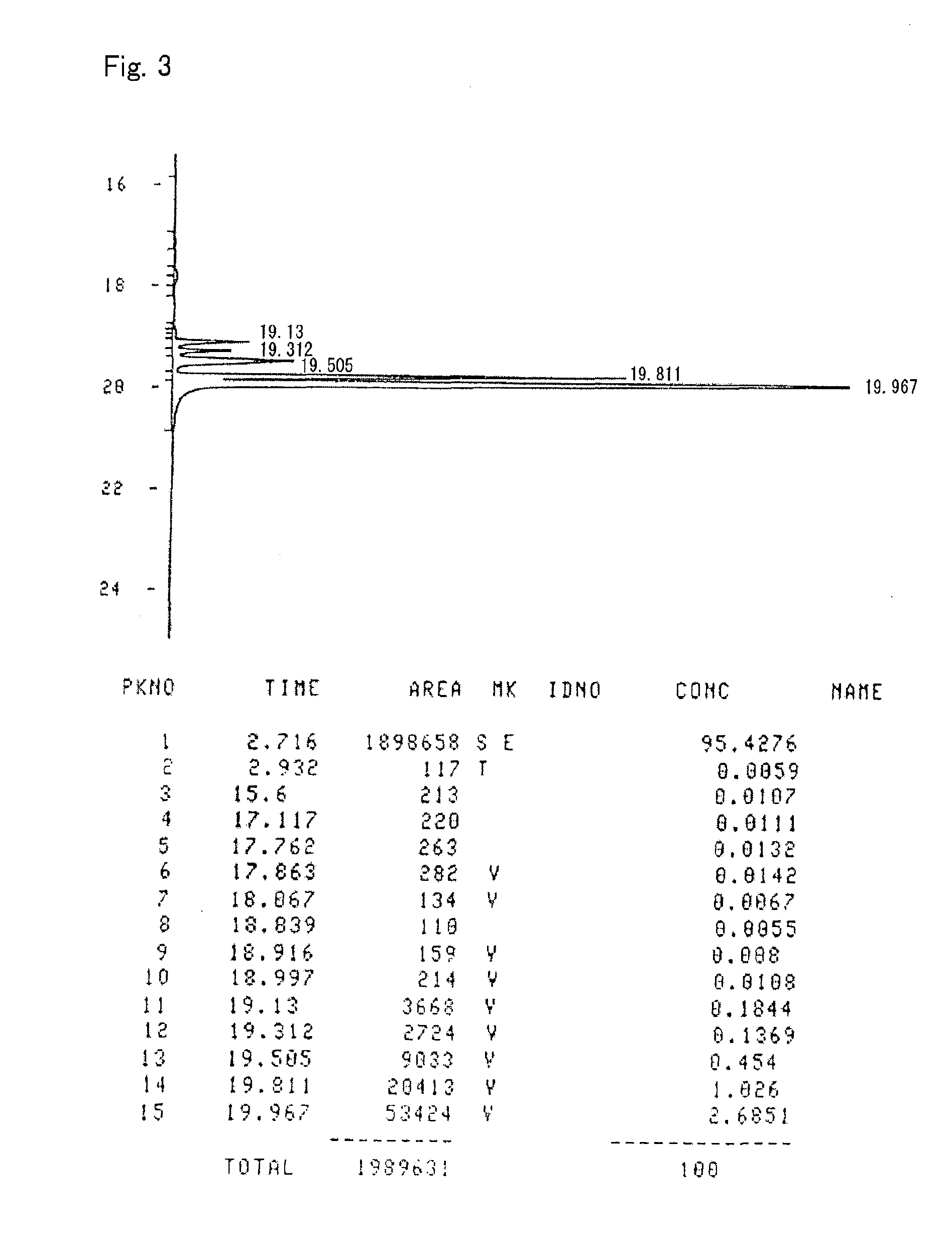Alicyclic diepoxy compound, epoxy resin composition comprising the same, and cured article therefrom
a technology of alicyclic diepoxy and epoxy resin, which is applied in the field of alicyclic diepoxy compounds, can solve the problems of low reactivity and insufficient properties of cured articles therefrom, and achieve the effects of improving reactivity, reducing the number of cured articles, and improving reactivity
- Summary
- Abstract
- Description
- Claims
- Application Information
AI Technical Summary
Benefits of technology
Problems solved by technology
Method used
Image
Examples
preparation example 1 (
Isomer Percentage: 9%)
[0157]A dehydration catalyst was prepared by mixing and stirring 70 g (0.68 mol) of 95 percent by weight sulfuric acid with 55 g (0.36 mol) of 1,8-diazabicyclo[5.4.0]undecene-7 (DBU).
[0158]In a 3-liter flask equipped with a stirrer, a thermometer, and a distillation line provided with a water outlet and kept at a constant temperature, were placed 1000 g (5.05 mol) of hydrogenated biphenol (i.e., 4,4′-dihydroxybicyclohexyl) represented by following Formula (3a):
125 g (0.68 mol in terms of sulfuric acid) of the above-prepared dehydration catalyst, and 1500 g of pseudocumene, and the flask was heated. Formation of water was detected around the time when the inner temperature became higher than 115° C. The heating was further continued until the temperature reached the boiling point of pseudocumene (inner temperature: 162° C. to 170° C.), to carry out dehydration under normal pressure. By-product water was distilled out and discharged out of the system via the wate...
preparation example 2 (
Isomer Percentage: 14%)
[0160]In a 3-liter flask equipped with a stirrer, a thermometer, and a distillation line provided with a water outlet and kept at a constant temperature, were placed 840 g (4.24 mol) of hydrogenated biphenol, 170 g (1.73 mol) of phosphoric acid, and 2350 g of undecane, and the flask was heated. Formation of water was detected from around the time when the inner temperature became higher than 110° C. The heating was further continued until the temperature reached the boiling point of undecane (inner temperature: 189° C. to 194° C.), and dehydration was conducted under normal pressure. By-product water was distilled off and discharged from the system via the water outlet. In this process, p-toluenesulfonic acid was fully dissolved in the reaction liquid under the reaction conditions. After a lapse of five and a half hours, a substantially theoretical amount of water (150 g) was distilled out, whereby the reaction was deemed to complete. Using a 10-tray Oldershaw...
example 1
[0166]A curable composition was prepared by mixing 100 parts by weight of the alicyclic epoxy compound prepared according to Preparation Example 1 with 0.3 part by weight of “San-Aid SI-60L” (a sulfonium salt cationic polymerization initiator) supplied by Sanshin Chemical Industry Co., Ltd. A sample was prepared by subjecting the curable composition to primary curing at 45° C. for two hours and thereafter to secondary curing at 150° C. for one hour. The glass transition temperature (Tg) of the sample cured article was measured through thermo-mechanical analysis (TMA) at a temperature elevation rate of 5° C. / minute, but no inflection point, which indicates the glass transition temperature (Tg), was observed even at 340° C. The cured article had a coefficient of linear expansion of 63 ppm, as calculated from a dimensional change from 50° C. to 200° C. determined in the above thermo-mechanical analysis. The cured article showed a transparent appearance upon heating to 300° C. at a temp...
PUM
| Property | Measurement | Unit |
|---|---|---|
| Temperature | aaaaa | aaaaa |
| Temperature | aaaaa | aaaaa |
| Temperature | aaaaa | aaaaa |
Abstract
Description
Claims
Application Information
 Login to View More
Login to View More - R&D
- Intellectual Property
- Life Sciences
- Materials
- Tech Scout
- Unparalleled Data Quality
- Higher Quality Content
- 60% Fewer Hallucinations
Browse by: Latest US Patents, China's latest patents, Technical Efficacy Thesaurus, Application Domain, Technology Topic, Popular Technical Reports.
© 2025 PatSnap. All rights reserved.Legal|Privacy policy|Modern Slavery Act Transparency Statement|Sitemap|About US| Contact US: help@patsnap.com



